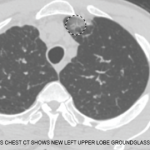In truth, however, I am a secret splitter. I use rituximab for the treatment of severe granulomatosis with polyangiitis, except in patients with rapidly progressive glomerulonephritis, when you can see the serum creatinine increase a full point every other day. Rituximab may be used for severe granulomatosis with polyangiitis, but it really shines as a treatment for patients with so-called grumbling disease, who have never been able to make it all the way off of prednisone. Methotrexate should be used for the treatment of non-severe vasculitis, except when there is even a hint of kidney involvement, because those patients are at even higher risk of renal relapse than other patients with limited disease.
And so on. When I teach, I lump, because I have no choice. There aren’t enough PowerPoint slides in the world to capture every nuance, so I round off the sharp corners and apply a little English to nudge a wanton fact into place. When I am in clinic, however, I split, and I compare each patient to the Roladex of patients I carry in my head, to see if I can find some clue to what might happen next.
Different Split
In 1956, rheumatologists began to split the inflammatory arthritides. That was the year that five members of the American Rheumatism Association reviewed 322 cases provided by physicians in 19 cities in the U.S. and Canada, and emerged with the American Rheumatism Association diagnostic criteria for rheumatoid arthritis.1 These criteria were gradually honed in a series of revisions, taking into account the discovery of rheumatoid factor and the importance of distinguishing rheumatoid arthritis from other diseases, such as the spondyloarthropathies, the crystalline arthropathies, polymyalgia rheumatica and other diagnoses that had gradually become more evident.2
In 2010, a sea change took place. A working group, comprising members of the ACR and the European League Against Rheumatism (EULAR), met to develop a new approach to the classification of rheumatoid arthritis. They noted that prior criteria “have a significant limitation in that they were derived by trying to discriminate patients with established RA from those with a combination of other definite rheumatologic diagnoses. They are therefore not helpful in achieving the goal of identifying patients who would benefit from early effective intervention. … Indeed, with modern therapies, the goal is to prevent individuals from reaching the chronic, erosive disease state that is exemplified in the 1987 criteria for RA.”3


